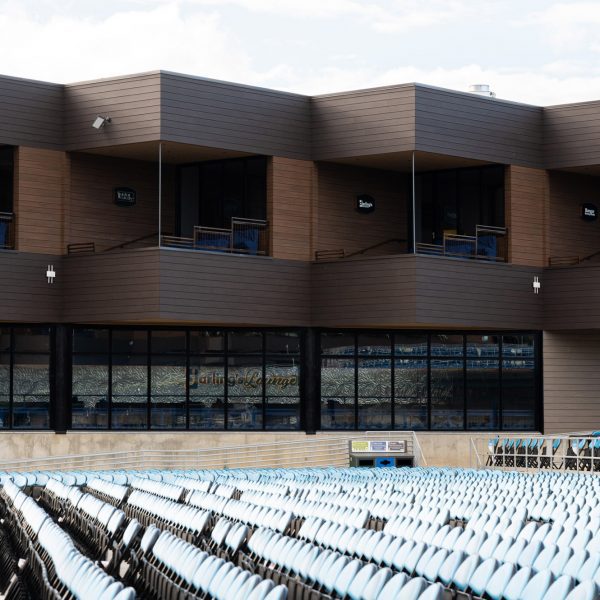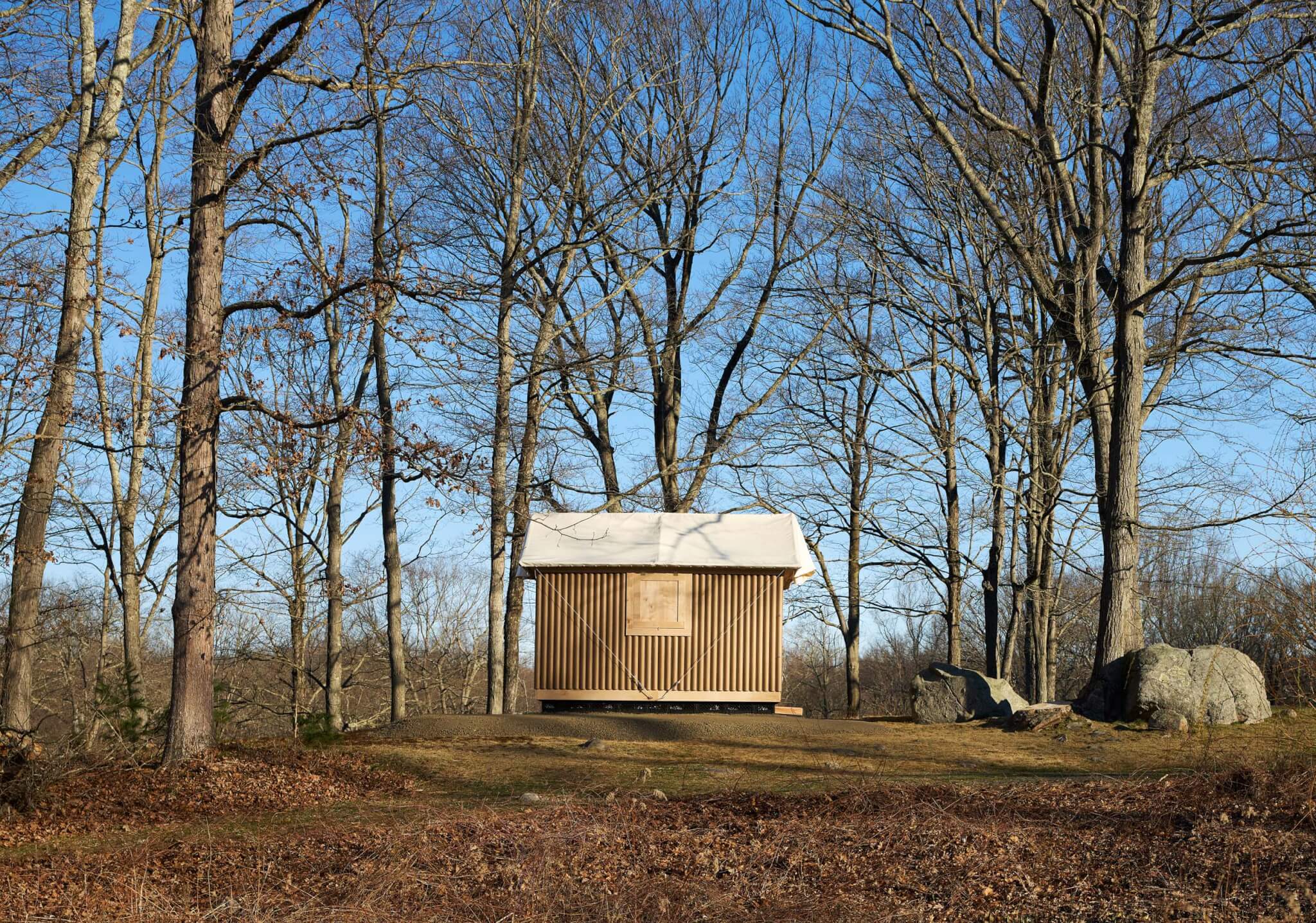[ad_1]
US studio Ervin Architecture has unveiled the latest phase of an open-air theatre in Bangor, Maine with wood-clad, sawtooth boxes that flank open-air seating.
The Maine Savings Amphitheater is the largest single building in the state of Maine in terms of square footage, with a capacity of 16,500 spectators.
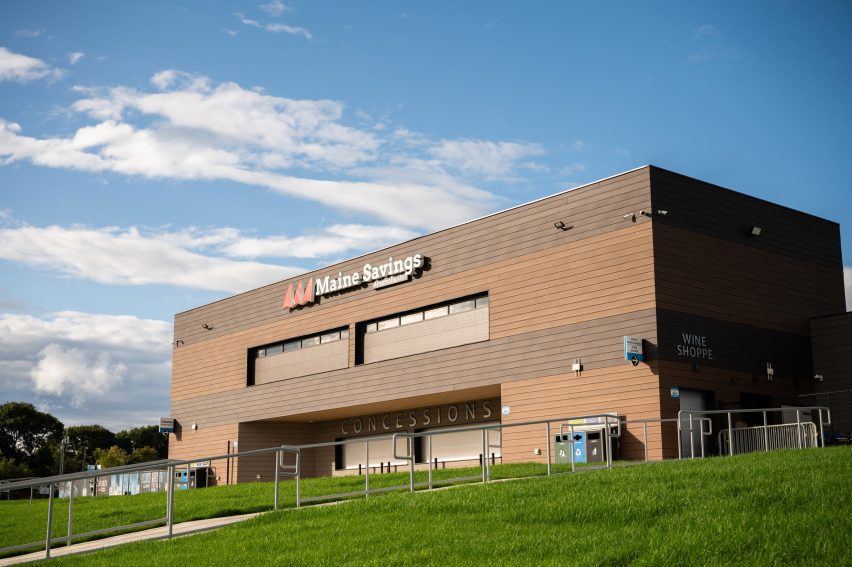

It contains 100,000 square feet (9,290 square metres) of building floor area as well as 130,000 square feet (12,077 square metres) of seating and concourse areas.
Ervin Architecture, which has offices in Maine and Florida, designed the venue to create clear sightlines, utilizing a 40-foot (12-metre) rise over 425-foot (130 metres) span from the front row to the back seat of the lawn.
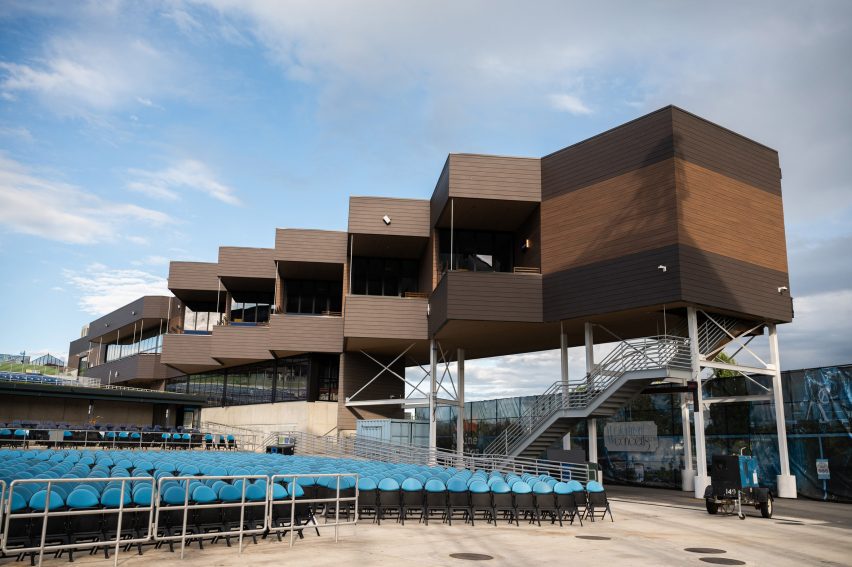

Opened in 2010 as a temporary stage on a hillside between Bangor’s Main Street, the shores of the Penobscot River and the Chessie System railroad line, the amphitheatre was established as a permanent venue seating 16,500 people in 2013.
It has since gone through multiple phases of expansion, with Ervin Architecture joining the design team in 2017.
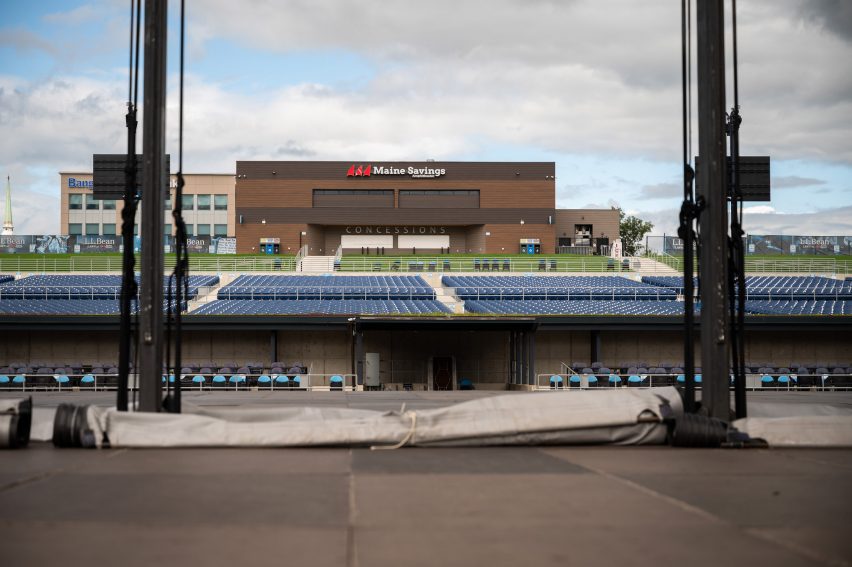

In 2018, “quasi-permanent shipping container structures” were built as annexes offsite to house food and beverage facilities, and the permanent eastside foundation was poured allowing the installation of four shipping containers that housed the corporate club spaces.
2019 saw structural and infrastructural improvements, extended foundations, and restroom facilities, before a sheet pile wall measuring 450 feet by 40 feet (137 metres by 12 metres) was constructed to shore up Main Street while the hillside was excavated to make way for expansion.
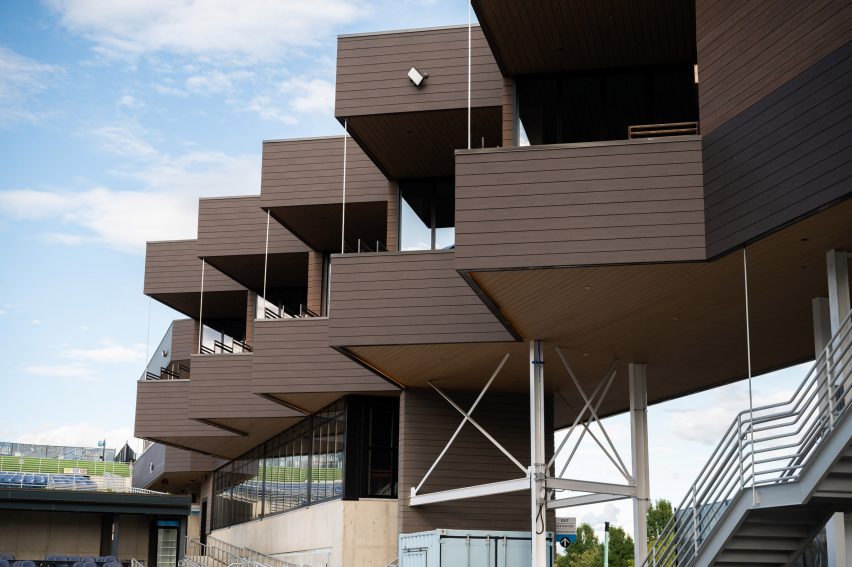

“EA has been entrusted with devising and executing a dynamic array of renovations and property improvements, establishing an adaptable design that is rooted in audience engagement and supports multi-seasonal outdoor operations,” the team said, calling out the custom architectural and engineering solutions that maximize the topography.
By 2023, the site boasted five permanent buildings that contain four sponsored clubs, 10 corporate suites, terraced fixed seating, improved venue ingress and egress and expansive concessions options across seven acres.
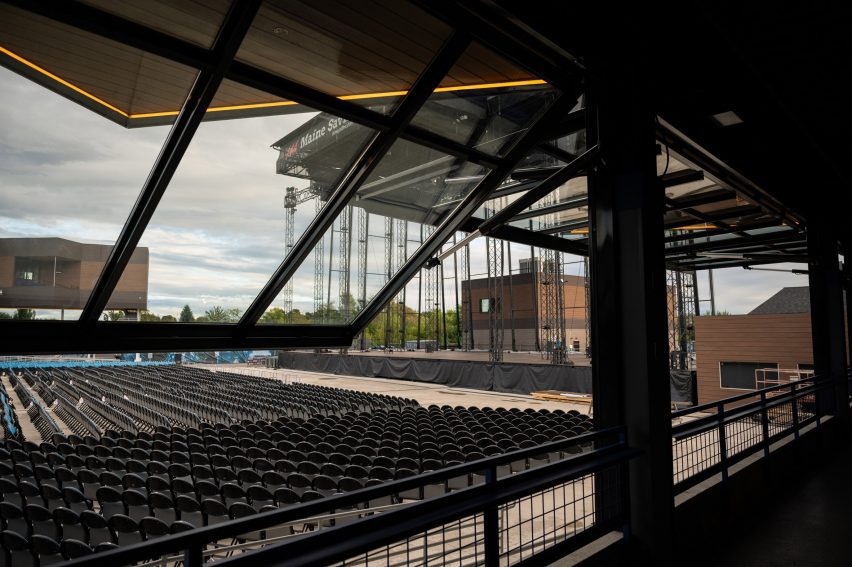

Two large, sawtooth-shaped buildings sit on either side of the stage and help to create a better acoustic environment for visitors.
“[It was] acoustically enhanced with an innovative rainscreen that allows the facades to drain efficiently using an air and moisture barrier that doubles as an acoustical fabric,” the team said.
“The result is a captivating aesthetic that establishes a functional layout of undulating balconies that provide each unit with independent, nonconflicting sight lines.”
In the open-air seating, a “canyon-land” circulation plan is embedded in the terraces, removing crowds from sightlines and creating a dramatic reveal of the stage for entering visitors.
The team prioritised the reduction of the venue’s carbon footprint with an emphasis on energy conservation, renewable and recycled content – like ZIP system sheathing, Marlite finishes and Azek cladding – and water conservation through low-flow fixtures and a green roof system.
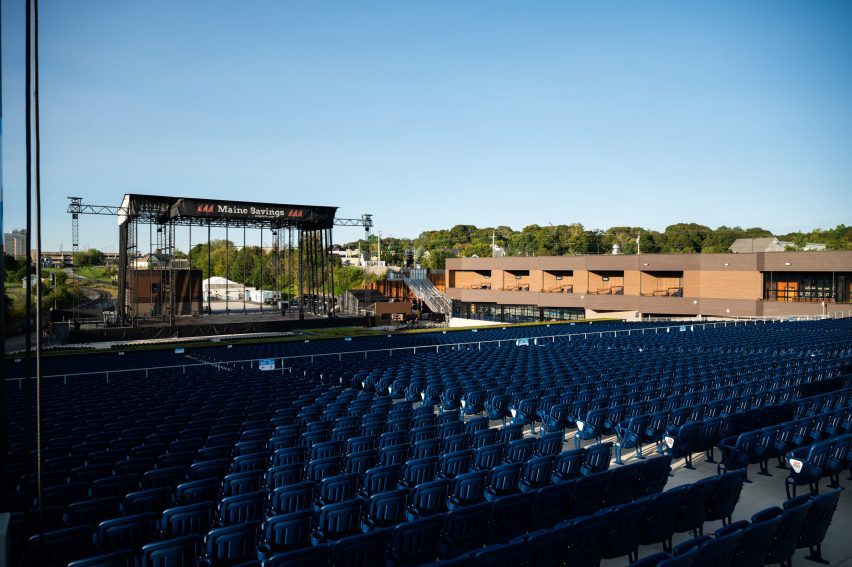

Currently, the team is constructing rooftop lounges – “dueling skydecks” that are slated to complete in 2025 – and working on plans for backstage amenities for visiting performers, such as apartments, offices and a driving range, spa and pool, which could arrive in 2026.
Nearby, HGA recently completed two mass timber education buildings for Bowdoin College, and Lever Architecture has designed a mass timber extension for the Portland Museum of Art.
The photography is by Dan Finnen.
Project credits:
Architect: Ervin Architecture
Owner: Waterfront Concerts
Civil, structural, & electrical Engineer: Haley Ward
Structural engineer: Foresight Engineering
[ad_2]
Source link

